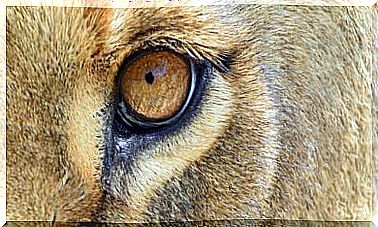Animal Ethology: What Is It?

Ethology is that branch of biology that studies animal behavior, with the aim of describing and explaining it. This behavior is determined both by genetic and environmental factors, and is understood as the way of acting and relating that each species has with its environment, its fellow men and its relatives.
Animal behavior factors

The genetic factor of animal behavior constitutes the set of characteristics that define the general temperament, both hereditary and innate ones.
The environment, on the other hand, affects the final behavior of the animal, since external stimuli can determine as much phobias and trauma as good behavior.
There are also internal factors that can alter its behavior, such as hormones, brain injuries or pain.
Ethology is a recent discipline which studies animal behavior. Its objectives and methods were formally established during the second half of the 20th century.
Ethology: some historical precedents
It can be said that man began to take an interest in the behavior of animals when he became a hunter.
Five thousand years before Christ, for example, the Sumerians left writings on the clay about the conduct of birds and fish.
In addition, Aristotle dedicated two volumes to the identification and classification of the different behaviors of the animal kingdom, based on the observations and interpretations he had collected from travelers and explorers from distant places.
It took many years for Charles Darwin, in the nineteenth century, to expose his theory of evolution through natural selection of species.
Ethology, a recent science
Ethology is, therefore, a discipline that can be defined as recent. Its objectives and methods have been formally established lately, during the second half of the last century.
In 1963, the Dutch scientist Nikolaas Tinbergen published the article “On the objectives and methods of ethology”.
Ten years later Tinbergen, together with Konrad Lorenz and Karl von Frisch, received the Nobel Prize for his studies on animal behavior. In doing so, ethology became a science in its own right.
Different ways to the same conclusion
On the other hand, while Europeans focused on observing animals in their natural habitat, on the American continent they insisted on laboratory studies.
Ultimately, it is now agreed that animal behavior is the result of the interaction between genetic and environmental factors.
Questions to explain animal behavior
The ethogram is the tool through which the behaviors of an animal are collected through observation. To explain these behaviors we can use the four questions established by Tinbergen:
- Cause. What are the stimuli, both internal and external, that provoke this attitude?
- Survival Value. How does such conduct affect the survival and success in continuing the species?
- Ontogenesis. How does this behavior develop during the life of the animal?
- Evolution. How did this conduct appear?
What is clinical ethology?
The so-called “clinical ethology” is dedicated to the study of behavioral variations in animals. Veterinarians use it to treat different diseases; however, the goal is broader and also involves the prevention, diagnosis and treatment of companion animal behavior problems.
In this way, we try to avoid those behaviors that can be dangerous or annoying for people. In addition, we avoid those that can injure or make our four-legged friends sick. For instance:
- Aggressive conduct;
- Excessive barking
- Making needs in unsuitable places.
Understanding animals to understand ourselves

Furthermore, understanding the behavior of animals should contribute to the survival of the different species that are threatened every day in their natural habitat.
This would also help humans: trying to understand animals, we would understand ourselves better and could thus coexist in harmony with all living beings that populate this planet.
Some of the next challenges of ethology should pass here.









